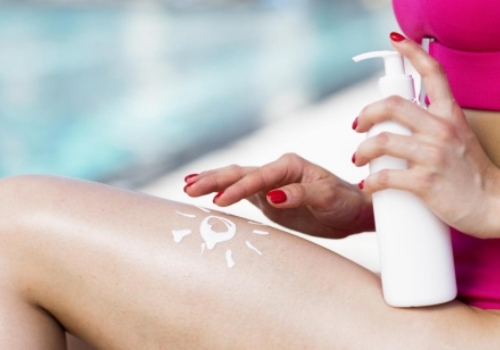Industry Information
Home > News > Industry Information > Ethylhexyl Triazone vs Benzophenone-3: Which Sunscreen Filter to Use?
Aug. 07, 2025
When developing or reformulating sunscreens, selecting the right UV filter is a decision that impacts not only product efficacy but also regulatory compliance, market positioning, and ecological footprint. Among the widely used filters, Ethylhexyl Triazone and Benzophenone-3 (also known as Oxybenzone) are often compared for their distinct characteristics in sun care formulations.

Both filters are established in the global market and offer UV protection, but they differ significantly in spectrum coverage, photostability, solubility, safety profile, and regulatory status. Understanding these differences is critical for formulators navigating the evolving landscape of sunscreen development.
All UV filters are designed to protect the skin from damage caused by UVA and UVB radiation. In this context, benzophenone-3 and Ethylhexyl Triazone serve as organic filters, meaning they absorb UV rays and convert them into heat.
However, their absorption profiles are not identical:
Benzophenone-3 provides broad-spectrum protection, primarily in the UVB and short UVA range (approximately 280–350 nm).
Ethylhexyl Triazone offers narrow but very strong UVB absorption (peak at 314 nm), often used to boost SPF values efficiently in low concentrations.
Ethylhexyl Triazone is considered one of the most photostable UVB filters available on the market. It does not degrade easily upon sun exposure, which makes it suitable for long-wear or water-resistant formulations.
Key technical advantages:
Very high molar extinction coefficient, allowing strong protection at low use levels (often below 3%)
Excellent compatibility with oil phases in emulsions and anhydrous systems
No significant photodegradation, even when exposed to prolonged UV radiation
In combination with other UVA filters (such as Avobenzone), Ethylhexyl Triazone is ideal for building broad-spectrum systems that meet global regulatory and consumer demands for high SPF with lightweight textures.
Benzophenone-3 remains widely used across many geographies for its dual UVB and UVA-II absorption. It has traditionally been valued for:
Broad-spectrum protection in a single molecule
Solubility in both water and oil, enabling versatile formulation options
Cost-effectiveness for mass-market sun care and hybrid formulations
However, in recent years, benzophenone-3 has come under scrutiny:
The EU limits usage to 6% in most formulations, and 2.2% in aerosol sprays
Hawaii and some U.S. states have restricted its use due to coral reef toxicity concerns
It is also listed as a potential allergen, with increasing avoidance among clean beauty brands
Because of these factors, many brands now look to Ethylhexyl Triazone as a safer and more photostable alternative.
Property | Ethylhexyl Triazone | Benzophenone-3 |
UV Range | Narrow UVB (280–320 nm) | Broad UVB + UVA-II (280–350 nm) |
Peak Absorption | 314 nm | ~288 nm |
Photostability | Very high | Moderate |
Typical Use Level | 1–3% | 2–6% |
Solubility | Oil-soluble | Oil- and water-soluble |
Global Approval | EU, ASEAN, LATAM | Increasingly restricted |
Allergen Risk | Low | Moderate to high |
Reef Safety | Considered safe | Under ecological restriction in some regions |
As can be seen from the table, Ethylhexyl Triazone is more in line with current industry trends in terms of photostability, regulatory adaptability, and formulation flexibility.
The selection of sunscreens should not only consider cost or raw material availability, but also the following factors:
Target sales region: Are there any regulatory restrictions (e.g., Hawaii, the European Union)?
Packaging and labeling requirements: Are "reef-safe" or "oxybenzone-free" claims required?
Product form: Is it a water-resistant, oil-based gel, or high-SPF product?
Synergistic sunscreen system: Is it intended for use with a UVA sunscreen?
These practical considerations will determine which ingredient best suits your product positioning and technical goals.

As formulation trends move toward transparency, safety, and alignment with evolving global standards, Ethylhexyl Triazone is gaining wider adoption—particularly in high-SPF, photostable sunscreen systems where performance and regulatory confidence are critical.
At TJCY, we supply high-purity Ethylhexyl Triazone suitable for global formulations. For brands operating in markets where Benzophenone-3 remains unrestricted, we also offer support for maintaining traditional systems.
Whether you're optimizing an existing product or developing a new sunscreen for regional compliance, evaluating your UV filter strategy is a key step toward ensuring both long-term stability and regulatory alignment.
Tianjin Chengyi International Trading Co., Ltd.
8th floor 5th Building of North America N1 Cultural and Creative Area,No. 95 South Sports Road, Xiaodian District, Taiyuan, Shanxi, China.
+86 351 828 1248 /
Navigation
